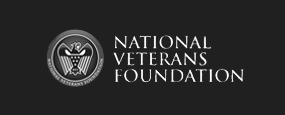
Military Sports (0)
Sed venenatis bibendum nisl, eget iaculis tortor imperdiet vel. In ut leo ut dui porta tincidunt. Aliquam erat volutpat. Vestibulum volutpat malesuada urna, in mollis tellus vehicula vitae. Fusce sed leo risus. Duis sagittis velit non lectus viverra cursus. Sed vel sagittis urna. Aliquam laoreet rutrum eros eu pretium. Vestibulum sit amet ullamcorper lorem. Vestibulum commodo massa a diam congue quis pharetra erat vulputate.
Viewmore news
November
HONOR & FIDELITY
Do you wish to read an outstanding book? Please read HONOR & FIDELITY "The 65th Infantry in Korea, 1950–1953" The author Col. (RET) Gilberto N. Villahermosa. (http://www.history.army.mil/html/books/korea/65Inf_Korea/65Inf_KW.pdf)
Foreword
Originally formed at the turn of the nineteenth century to protect America's strategic interests in the Caribbean, the 65th Infantry was composed of locally recruited Puerto Rican soldiers led primarily by non-Hispanic "continental" officers. Although in existence for almost fifty years, the 65th had not experienced intense combat until it was committed to the Korean peninsula in the initial months of the war. There, despite its lack of previous wartime service, the regiment did extremely well from September 1950 to August 1951, establishing a solid reputation as a dependable infantry unit and a mainstay of the heavily embattled 3d Infantry Division. After that period, however, its performance began to suffer as experienced cadre rotated out of the regiment and were replaced by new leaders and soldiers who lacked the skills and special cohesive bonds displayed by their predecessors. The net result was a highly publicized series of incidents and disciplinary actions that have never been adequately explained or understood.
This study reviews the performance of the 65th Infantry throughout the war, providing insights not only into the regiment's unique problems but also into the status of the U.S. Army's combat forces during one of the most trying periods in its history. Its findings underscore the critical impact of personnel-rotation policies, ethnic and organizational prejudices, and the work of small-unit leaders on combat readiness and battlefield success.They also illustrate the critical role of senior leaders in analyzing problems in these areas in a timely fashion and instituting effective reforms. For the 65th, a catastrophic shortage of trained NCOs, unaddressed language problems, and inept command leadership temporarily undermined its combat effectiveness. Making matters worse, senior commanders reacted in a heavy-handed manner with little analysis of what was really going on. In the end, it was the martial traditions of the 65th's Hispanic soldiers and a host of new leaders willing to address its special problems that pulled the unit through.
The regiment's colors remained in Korea until November 1954, when the unit returned to Puerto Rico. Today, the 1st Battalion of the 65th Infantry remains as part of the Puerto Rican National Guard, a testimony to a unique combat unit that served the United States Army well for over one hundred x years. Yet, what has sometimes been called the Forgotten War is still rich in lessons that the Army of today can ill afford to forget if it is to succeed on the battlefields of tomorrow.
Washington, D.C. Jeffrey J. Clarke
2 June 2009 Chief of Military History
November
On June 25, 1950, the Korean War began when some 75,000 soldiers from the North Korean People’s Army poured across the 38th parallel, the boundary between the Soviet-backed Democratic People’s Republic of Korea to the north and the pro-Western Republic of Korea to the south. This invasion was the first military action of the Cold War. By July, American troops had entered the war on South Korea’s behalf. As far as American officials were concerned, it was a war against the forces of international communism itself. After some early back-and-forth across the 38th parallel, the fighting stalled and casualties mounted with nothing to show for them. Meanwhile, American officials worked anxiously to fashion some sort of armistice with the North Koreans. The alternative, they feared, would be a wider war with Russia and China–or even, as some warned, World War III. Finally, in July 1953, the Korean War came to an end. In all, some 5 million soldiers and civilians lost their lives during the war. The Korean peninsula is still divided today.
The Two Koreas
“If the best minds in the world had set out to find us the worst possible location in the world to fight this damnable war,” U.S. Secretary of State Dean Acheson (1893-1971) once said, “the unanimous choice would have been Korea.” The peninsula had landed in America’s lap almost by accident. Since the beginning of the 20th century, Korea had been a part of the Japanese empire, and after World War II it fell to the Americans and the Soviets to decide what should be done with their enemy’s mperial possessions. In August 1945, two young aides at the State Department divided the Korean peninsula in half along the 38th parallel. The Russians occupied the area north of the line and the United States occupied the area to its south.
The Korean War and the Cold War
Even so, the North Korean invasion came as an alarming surprise to American officials. As far as they were concerned, this was not simply a border dispute between two unstable dictatorships on the other side of the globe. Instead, many feared it was the first step in a communist campaign to take over the world. For this reason, nonintervention was not considered an option by many top decision makers. (In fact, in April 1950, a National Security Council report known as NSC-68 had recommended that the United States use military force to “contain” communist expansionism anywhere it seemed to be occurring, “regardless of the intrinsic strategic or economic value of the lands in question.”)
“If we let Korea down,” President Harry Truman (1884-1972) said, “the Soviet[s] will keep right on going and swallow up one [place] after another.” The fight on the Korean peninsula was a symbol of the global struggle between east and west, good and evil. As the North Korean army pushed into Seoul, the South Korean capital, the United States readied its troops for a war against communism itself.
At first, the war was a defensive one–a war to get the communists out of South Korea–and it went badly for the Allies. The North Korean army was well-disciplined, well-trained and well-equipped; Rhee’s forces, by contrast, were frightened, confused, and seemed inclined to flee the battlefield at any provocation. Also, it was one of the hottest and driest summers on record, and desperately thirsty American soldiers were often forced to drink water from rice paddies that had been fertilized with human waste. As a result, dangerous intestinal diseases and other illnesses were a constant threat.
By the end of the summer, President Truman and General Douglas MacArthur (1880-1964), the commander in charge of the Asian theater, had decided on a new set of war aims. Now, for the Allies, the Korean War was an offensive one: It was a war to “liberate” the North from the communists.
Initially, this new strategy was a success. An amphibious assault at Inchon pushed the North Koreans out of Seoul and back to their side of the 38th parallel. But as American troops crossed the boundary and headed north toward the Yalu River, the border between North Korea and Communist China, the Chinese started to worry about protecting themselves from what they called “armed aggression against Chinese territory.” Chinese leader Mao Zedong (1893-1976) sent troops to North Korea and warned the United States to keep away from the Yalu boundary unless it wanted full-scale war.
“No Substitute for Victory”?
This was something that President Truman and his advisers decidedly did not want: They were sure that such a war would lead to Soviet aggression in Europe, the deployment of atomic weapons and millions of senseless deaths. To General MacArthur, however, anything short of this wider war represented “appeasement,” an unacceptable knuckling under to the communists.
As President Truman looked for a way to prevent war with the Chinese, MacArthur did all he could to provoke it. Finally, in March 1951, he sent a letter to Joseph Martin, a House Republican leader who shared MacArthur’s support for declaring all-out war on China–and who could be counted upon to leak the letter to the press. “There is,” MacArthur wrote, “no substitute for victory” against international communism.
For Truman, this letter was the last straw. On April 11, the president fired the general for insubordination.
The Korean War Reaches a Stalemate
In July 1951, President Truman and his new military commanders started peace talks at Panmunjom. Still, the fighting continued along the 38th parallel as negotiations stalled. Both sides were willing to accept a ceasefire that maintained the 38th parallel boundary, but they could not agree on whether prisoners of war should be forcibly “repatriated.” (The Chinese and the North Koreans said yes; the United States said no.) Finally, after more than two years of negotiations, the adversaries signed an armistice on July 27, 1953. The agreement allowed the POWs to stay where they liked; drew a new boundary near the 38th parallel that gave South Korea an extra 1,500 square miles of territory; and created a 2-mile-wide “demilitarized zone” that still exists today.
Casualties of the Korean War
The Korean War was relatively short but exceptionally bloody. Nearly 5 million people died. More than half of these–about 10 percent of Korea’s prewar population–were civilians. (This rate of civilian casualties was higher than World War II’s and Vietnam’s.) Almost 40,000 Americans died in action in Korea, and more than 100,000 were wounded.
For more information, please visit: http://www.history.com/topics/korean-war
October
Bridgeport Military Academy, Connecticut
Written by Super UserBMA Contact Information:
461 Mill Hill Avenue
Bridgeport, CT 06610
Directions
Principal: Joseph J. Pulit IV
E-mail: This email address is being protected from spambots. You need JavaScript enabled to view it.
School Secretary: Mae Nubin
E-mail: This email address is being protected from spambots. You need JavaScript enabled to view it.
Phone: (203)-337-2513
Fax: (203) 576-8345
September
State to review CT Police use of military equipment
Written by Super UserWashington – Connecticut’s police chiefs assured the state’s U.S. senators that the abuses of police authority that occurred in Ferguson, Mo., would likely not happen in Connecticut. But it’s likely Connecticut cops' use of military equipment to fight crime is soon coming under review.
Images of Ferguson police using war-fighting equipment to threaten those who protested the police killing of a black youth last month sparked a debate in Washington over the future of a Pentagon program that donates surplus equipment to the nation’s cops.
Mike Lawlor, Connecticut Undersecretary for Criminal Justice Policy and Planning, said a divided Congress may not be able to agree on reforms of the “1033 program,” that has provided military assault rifles, grenade launchers, night vision equipment, mine resistant and armored vehicles and even a helicopters to Connecticut police departments.
So the Malloy administration may also look at placing restrictions on the program or persuading Connecticut police to voluntarily place curbs on the acquisition and use of military equipment, Lawlor said.
“I think that’s the goal,” he said.
Lawlor attended a meeting on Thursday in New Haven with U.S. Senator. Richard Blumenthal and Chris Murphy over the 1033 program.
At that meeting, Connecticut police chiefs defended the program and said state police officers receive intensive training that would avoid the type of violence that occurred in Ferguson.
“Connecticut is not Ferguson,” Murphy said. “Our police departments receive a level of training that wasn’t available in Ferguson.”
Murphy also said some police chiefs would rather be able to purchase non-military versions of the equipment they’ve received by the Pentagon, but don’t have the money.
Yet Murphy said he “thinks there is plenty of room for reform” of the 1033 program, including removing some of types of weapons from the program and ensuring that training “comes along with the equipment.”
Another change would be to give police departments resources to modify the equipment they receive from the Defense Department, Murphy said.
Southern Connecticut State University Police Chief Joseph Dooley, who also heads the Police Association of Connecticut, said “I’m certain that there is going to be a review, but we’re very much in support of the continuation of the program.”
Dooley said Connecticut police receive the best training in the nation, 880 hours of training over six months that includes classes in conflict resolution and crowd control, followed by three months of field training.
“Having a good relationship with the community and good community policing initiatives and trust is at the core of what we do,” he said.
Dooley also said much of the equipment Connecticut police have received from the military, including massive, mine-resistant armored vehicles, have been used in defensive actions, to rescue officers or innocent bystanders from dangerous situations.
“I don’t think you want to put our officers in harm’s way when there is a way to protect these officers,” Dooley said.
The Justice Department announced Thursday it is conducting a sweeping investigation into the Ferguson police department. The civil rights probe will look into patterns of stops and arrests, the use of force, and police training — as well as the treatment of people held in Ferguson's city jail — to determine whether racial discrimination played a factor in police behavior there.
August
2014 HAVOCT INC. Annual Picnic
On August 23, 2014, the HAVOCT INC members participated in the annual picnic, which they enjoyed at the Winding Trails, located in Farmington CT. At least about 32 members & their family attended the event. The event involved music, fun, laughs and one of the most important good food, such as Arroz Amarillo con Costillas (Yellow Rice and Ribs), Pernil de Cerdo Asado (Roasted Pork), Pollo Asado (Roasted Chicken), Pasta Salad, Morcillas Fritas a variety of Desserts, and more...not to forget the delicious Hot Dogs and Burgers!!!
Thank you to all the members, but specially SGT Luis Vera & SFC (RET) Isidro Maldonado who helped us with the grill. We look forward to our upcoming event; therefore, if you are member make sure to attend the meeting to find out more information, and if you are not a member, become one!!!
Respectfully,
HAVOCT INC Webmaster
October
The Department of Mental Health and Addiction Services (DMHAS)
Written by Super UserMISSION: The mission of the Department of Mental Health and Addiction Services is to improve the quality of life of the people of Connecticut by providing an integrated network of comprehensive, effective and efficient mental health and addiction services that foster self-sufficiency, dignity and respect.
The Department of Mental Health and Addiction Services (DMHAS) promotes and administers comprehensive, recovery-oriented services in the areas of mental health treatment and substance abuse prevention and treatment throughout Connecticut.
While the Department's prevention services serve all Connecticut citizens, its mandate is to serve adults (over 18 years of age) with psychiatric or substance use disorders, or both, who lack the financial means to obtain such services on their own. DMHAS also provides collaborative programs for individuals with special needs, such as persons with HIV/AIDS infection, people in the criminal justice system, those with problem gambling disorders, substance abusing pregnant women, persons with traumatic brain injury or hearing impairment, those with co-occurring substance abuse and mental illness, and special populations transitioning out of the Department of Children and Families.
DMHAS operates on the belief that most people with mental illnesses and/or substance use disorders can and should be treated in community settings, and that inpatient treatment should be used only when absolutely necessary to meet the best interests of the patient. Effective care requires that services such as residential, supportive, rehabilitative and crisis intervention programs are available within their local communities. DMHAS is responsible for providing a wide range of services to adults in each of the five human service regions in Connecticut. For assistance in finding services in your area, follow the link to: Finding services in your area.
The Commissioner and the DMHAS Executive Group confer with many constituency and stakeholder groups. These include the State Board of Mental Health and Addiction Services, a 40-member advisory group consisting of 15 gubernatorial appointees, the chairperson, one designee each from the 5 Regional Mental Health Boards, and one designee each from the 15 substance abuse Regional Action Councils. For more information on these groups, follow the link to: State Advisory Board.
Fore more information --- PRESS HERE http://www.ct.gov/dmhas/site/default.asp
May
MAJ Lesbia I. Nieves was officially promoted to the rank of Lieutenant Colonel
Written by Super UserMAJ Lesbia I. Nieves was officially promoted to the rank of Lieutenant Colonel with the Connecticut Army National Guard on Thursday, May 15, 2014. The ceremony took place at the State Armory in the presence of her husband, son, parents, HAVOCT, Inc. family and her Battalion.
LTC Lesbia I. Nieves
Connecticut Army National Guard
MAJ Lesbia I. Nieves was officially promoted to the rank of Lieutenant Colonel with the Connecticut Army National Guard on Thursday, May 15, 2014. The ceremony took place at the State Armory in the presence of her husband, son, parents, HAVOCT, Inc. family and her Battalion.
LTC Lesbia I. Nieves has been a member of the Connecticut Army National Guard since 1987. She is an OIF Veteran and Past President of the Hispanic-American Veterans of CT, Inc (HAVOCT, Inc.) and current Advisor. In May 1994, she enrolled in the Officer Candidate School with the Connecticut Army National Guard and graduated in August 1995.
During her years as a commissioned officer, she has held various leadership positions that have included but not limited to the following: Platoon Leader; Executive Officer; Company Commander; Staff Officer for BN, Logistical Officer; Operations Officer (Major Command Group), Operations and Training Officer for CTARNG Recruiting and Retention, Battalion Commander, and Executive Officer for the 118th Multifunctional Medical Battalion. She has also served as the State Partnership Program Director for the CT National Guard working with the Partner Nation of the Country of Uruguay. Most recently she completed a one tour at the National Guard Bureau working in the International Affairs Division State Partnership program, as one of the US Southern Commands desk officers. She was recently assigned as the Battalion Commander for the CTARNG 143rd Combat Service Support BN Waterbury, CT.
LTC Nieves holds a B.S. degree with a major in Psychology and minor in Sociology and two Masters Degrees: one in Counseling with a concentration in Marriage and Family Counseling and the second degree in Public Administration with a concentration on National Security Affairs. She has also completed various military educational programs as well to include most recently graduating from the Western Hemisphere Institute for Security Cooperation, Command and General Staff College program in 2009.
She has been employed by the Department of Children and Families since 1995 and holds the position of Social Work Supervisor. She has worked primarily within the Hartford and Manchester communities.
She is a Board Member of the Connecticut State Veterans Memorial, Inc. She is a life Member of the VFW, a member of the American Legion, the Women Veterans’ Memorial, and the American Veterans Association (AMVETS).
She is married to Edward Nieves and they have three children. LTC Nieves and her family reside in Manchester, Connecticut. The LTC thanked her husband, children and parents for their support throughout her years of service and she recognized MAJ (Ret) Edna Acosta-Newson as her mentor and one of the people who encouraged her to continue when she felt she could no longer serve for a variety of reasons.
The LT Colonel’s promotion made history as she is the first Hispanic female to move up to this high a rank within the Connecticut Army National Guard. We wish her the best of luck in her new endeavors and know she will continue to serve the State and the Nation well.
October
SUBASE MWR unveils new Family Fitness Center
Written by Super UserBy MC2(AW/SW) Kristina Young
GROTON, Conn. - Military and family members with young children have a new option at Naval Submarine Base New London (SUBASE) when it comes to finding time for fitness and a safe place for a youngster to await their workout completion.
Families joined SUBASE and Morale, Welfare, and Recreation Department (MWR) leadership in celebrating the ribbon-cutting and grand-opening of the base’s new Family Fitness Center, Oct. 8. Located on the third floor of Building 83, the new Family Fitness Center is adjacent to the base’s Body Works Fitness Center.
“This center was a suggestion by some of our family members who wanted to have a safe area to bring their children while working-out and directly watching over them,” said Capt. Carl Lahti, SUBASE commanding officer. “As we help DoD pilot the Healthy Base Initiative (HBI), creating this room, and the opportunity it offers, was more than the right thing to do.”
Promoting fitness and healthy lifestyles has been a goal since SUBASE was selected as one of 13 installations to pilot HBI last year. Under DOD’s Operation Live Well, which is aimed at increasing the health and wellness of the total force, including civilians and family members, the HBI pilot program is aimed at helping DOD gather information about current practices, best practices, and new opportunities.




